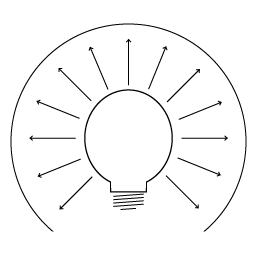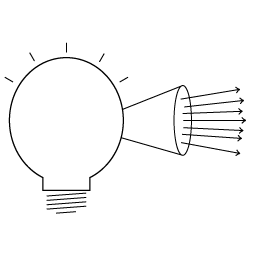5.9 KiB
High Definition Render Pipeline Glossary
General terms
atmospheric scattering:
Atmospheric scattering is the phenomena that occurs when particles suspended in the atmosphere diffuse (or scatter) a portion of the light, passing through them, in all directions.
bokeh:
The effect that occurs when a camera renders an out-of-focus point of light.
channel packing:
A channel-packed Texture is a Texture which has a separate grayscale image in each of its color channels.
Exponential Variance Shadow Map:
A type of shadow map that uses a statistical representation of the Scene's depth distribution and allows for the filtering of data stored in it.
face:
A face refers to one side of a piece of geometry. The front face is the side of the geometry with the normal.
face culling:
Face culling is an optimization that makes the renderer not draw faces of geometry that the camera can not see.
f-number:
The ratio of the focal length to the diameter of the camera lens. HDRP technically uses t-number, but since Cameras in Unity are optically perfect, f-number and t-number are identical.
Nyquist rate:
The minimum rate at which you can sample a real-world signal without introducing errors. This is equal to double the highest frequency of the real-world signal.
physically-based rendering (PBR):
PBR is an approach to rendering that emulates accurate lighting of real-world materials.
ray marching:
An iterative ray intersection test where your ray marches back and forth until it finds the intersection or, in a more general case, solves the problem you define for it.
texture atlas:
A texture atlas is a large texture containing several smaller textures packed together. HDRP uses texture atlases for shadow maps and decals.
Normal mapping
tangent space normal map:
A type of normal map in the UV space of the GameObject. You can use it on any Mesh, including deforming characters.
object space normal map:
This contains the same details as the tangent space normal map, but also includes orientation data. You can only use this type of normal map on a static Mesh that does not deform. This normal map type is less resource-intensive to process, because Unity does not need to make any transform calculations.
bent normal map:
HDRP uses the bent normal to prevent light leaking through the surface of a Mesh. In HDRP, bent normal maps can be in tangent space or object space.
Aliasing and anti-aliasing terms
aliasing:
Describes a distortion between a real-world signal and a digital reconstruction of a sample of a signal and the original signal itself.
fast approximate anti-aliasing (FXAA):
An anti-aliasing technique that smooths edges on a per-pixel level. It is not as resource intensive as other techniques.
spatial aliasing:
Refers to aliasing in digital samples of visual signals.
temporal anti-aliasing (TAA):
An anti-aliasing technique that uses frames from a history buffer to smooth edges more effectively than fast approximate anti-aliasing. It is substantially better at smoothing edges in motion but requires motion vectors to do so.
Lighting terms
illuminance:
A measure of the amount of light (luminous flux) falling onto a given area. Differs from luminance because illuminance is a specific measurement of light whereas luminance describes visual perceptions of light.
luminous flux:
A measure of the total amount of visible light a light source emits.
luminous intensity:
A measure of visible light as perceived by human eyes. It describes the brightness of a beam of light in a specific direction. The human eye has different sensitivities to light of different wavelengths, so luminous intensity weights each different wavelength contribution by the standard luminosity function.
luminosity function:
A function that describes a wave that represents the human eye’s relative sensitivity to light of different wavelengths. This wave corresponds weight values, between 0 and 1 on the vertical axis, to different wavelengths, on the horizontal axis. For example, the standard luminosity function peaks, with a weight of 1, at a wavelength of 555 nanometers and decreases symmetrically with distance from this value.
punctual lights:
A light is considered to be punctual if it emits light from a single point. HDRPs Spot and Point Lights are punctual.
Rendering Artifacts
disocclusion
A rendering artifact that describes the situation where a GameObject that was previously occluded becomes visible.
ghosting
A rendering artifact that describes the situation where a moving GameObject leaves a trail of pixels behind it.
z-fighting
A rendering artifact that describes the situation where two or more GameObjects have approximately the same value in the z-buffer. This causes the GameObjects to appear to flicker.


